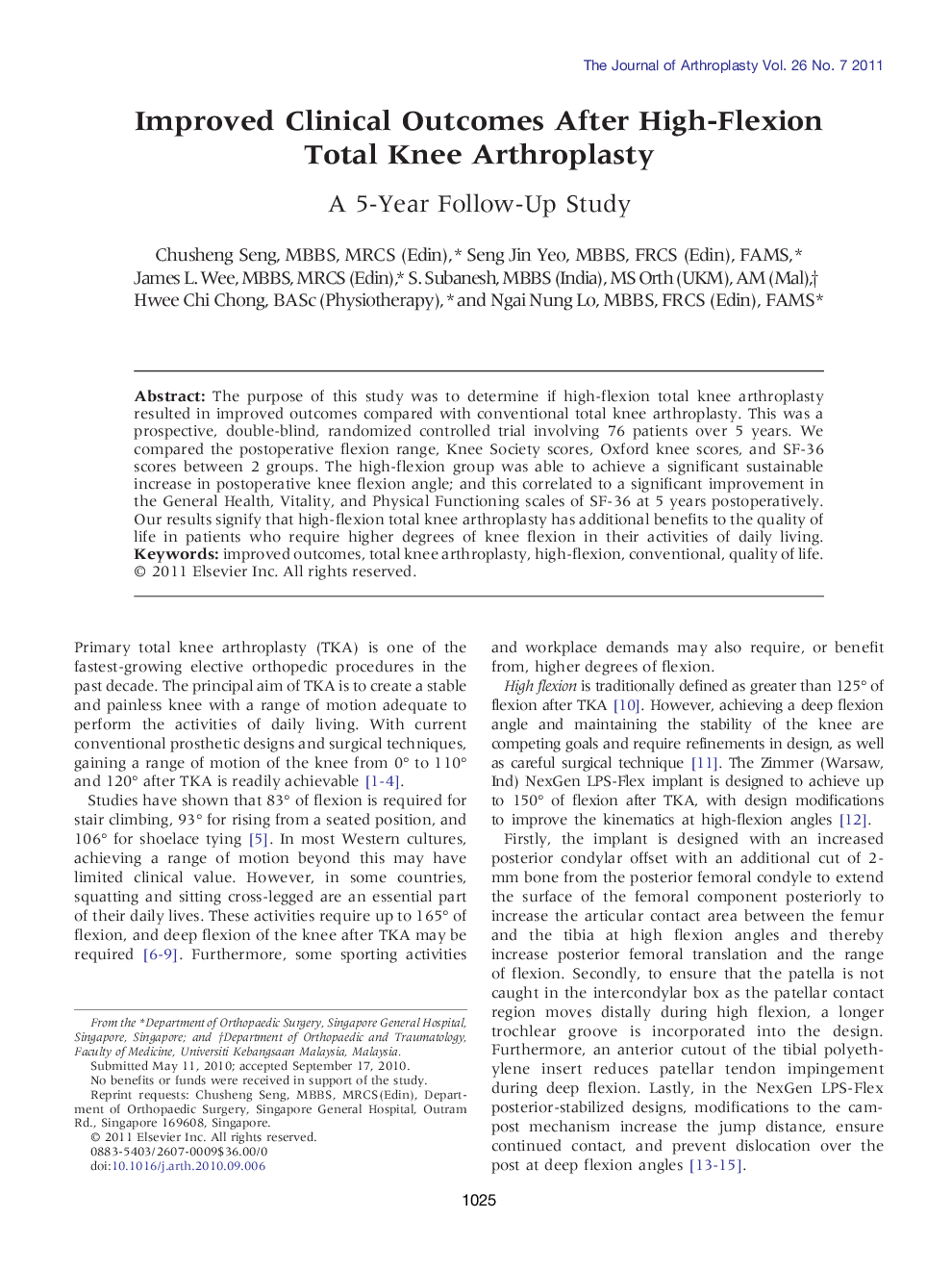| Article ID | Journal | Published Year | Pages | File Type |
|---|---|---|---|---|
| 4062204 | The Journal of Arthroplasty | 2011 | 6 Pages |
The purpose of this study was to determine if high-flexion total knee arthroplasty resulted in improved outcomes compared with conventional total knee arthroplasty. This was a prospective, double-blind, randomized controlled trial involving 76 patients over 5 years. We compared the postoperative flexion range, Knee Society scores, Oxford knee scores, and SF-36 scores between 2 groups. The high-flexion group was able to achieve a significant sustainable increase in postoperative knee flexion angle; and this correlated to a significant improvement in the General Health, Vitality, and Physical Functioning scales of SF-36 at 5 years postoperatively. Our results signify that high-flexion total knee arthroplasty has additional benefits to the quality of life in patients who require higher degrees of knee flexion in their activities of daily living.
